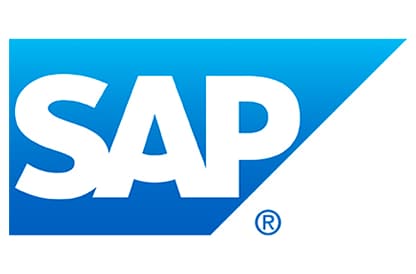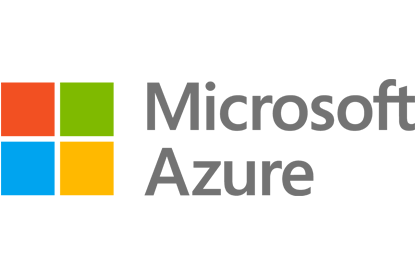What is B2B integration?

Overview
B2B integration (B2B integration) streamlines data exchange and collaboration between organizations, enhancing supply chain efficiency and reducing costs. B2B integration is essential for operational efficiency and competitiveness, facilitating the automated exchange of various business documents through electronic data interchange (EDI).
B2B integration
What is B2B Integration?
B2B integration, or business-to-business integration, is a set of technical processes and tools that enable the exchange of business documents and data between disparate systems and applications used by different organizations. It encompasses a range of technologies, protocols, and standards designed to facilitate seamless communication and collaboration between trading partners, suppliers, distributors, and customers.
At its core, B2B integration, allows companies to streamline their supply chains, automate transactions, and collaborate more efficiently with partners, suppliers, and customers. Businesses today operate in complex ecosystems, making B2B integration essential for achieving operational efficiency, reducing costs, and maintaining a competitive edge. This electronic data interchange enables the automated exchange of various business documents, such as purchase orders, invoices, shipping notices, and inventory updates, in a standardized and structured format.
Why do you need B2B integration?
Our fast-paced world and rapidly evolving partner and customer expectations make relying on manual, error-prone data processes unsustainable. Businesses face communication challenges due to their diverse systems and applications. To achieve goals like increased revenue and faster time to market, organizations need a modern B2B integration solution. This enables swift, reliable digital connections that reduce time to market and enhance agility for competitive advantage.
How does B2B integration impact supply chains?
B2B integration has a profound impact on supply chains, driving efficiency, visibility, and collaboration across the entire network of trading partners. Here are some key examples of how B2B integration influences supply chains:
Efficiency and automation:
B2B integration automates manual processes such as order processing, invoicing, and inventory management. This automation reduces errors, speeds up transactions, and minimizes the need for manual intervention, leading to improved operational efficiency.
Real-time visibility:
B2B integration provides real-time visibility into supply chain activities by enabling seamless data exchange between systems. This visibility allows organizations to track shipments, monitor inventory levels, and manage demand more effectively, leading to better decision-making and responsiveness.
Collaboration and coordination:
B2B integration facilitates collaboration and coordination among trading partners by sharing relevant information in real-time. This collaboration enables better synchronization of supply and demand, improved forecasting accuracy, and enhanced overall supply chain coordination.
Cost reduction:
By automating processes and improving efficiency, B2B integration helps reduce operational costs. Additionally, better inventory management and demand forecasting can lead to reduced inventory holding costs and lower stockouts or overstocks.
Scalability and flexibility:
B2B integration solutions are scalable and flexible, allowing organizations to easily adapt to changing business needs, market demands, and growth opportunities. This scalability ensures that the supply chain can expand or adjust without significant disruptions.
Compliance and risk management:
B2B integration helps organizations manage compliance with regulations and standards by ensuring accurate and timely data exchange. It also enables better risk management by providing visibility into potential issues or disruptions in the supply chain, allowing organizations to proactively address them.
Enhanced customer satisfaction:
Improved supply chain visibility, efficiency, and coordination resulting from B2B integration ultimately lead to better customer satisfaction. Timely and accurate order fulfillment, reduced lead times, and improved product availability contribute to a positive customer experience.
What are the types of B2B integrations/business processes?
There are two different types of B2B integration:
- Data-level integration: This is the process of moving from paper to digital documents and involves the automating of document exchange between trading partners. Electronic data interchange (EDI) can be thought of as the first generation of this type of B2B integration.
- People-level integration: This enables effective communication and collaboration between trading partners to conduct end-to-end business processes. This will involve features such as partner onboarding and community management.
The best B2B integration platforms provide a wide range of capabilities to address both types of integration.
What are the benefits of B2B integration?
By leveraging the leading solutions for B2B integration and supply chain management, businesses can enjoy several benefits, including:
- Increased operational efficiency: Automating business processes and document exchange reduces manual effort, minimizes errors, and accelerates cycle times.
- Enhanced visibility and control: Real-time visibility into supply chain operations, inventory levels, and partner interactions enables better decision-making and proactive risk management.
- Improved collaboration and compliance: Secure and reliable exchange of information with trading partners ensures compliance with industry standards and regulatory requirements.
- Cost savings: Optimized/streamlined supply chain processes and reduced manual interventions eliminate errors associated with manual data entry, leading to cost savings and improved operational efficiency.
- Scalability and flexibility: Cloud-based solutions like OpenText Business Network Cloud offer scalability and flexibility to adapt to changing business needs and growth.
- Improved customer satisfaction: Faster order fulfillment, accurate deliveries, and better communication lead to happier customers.
- Faster time-to-market: B2B integration facilitates quicker onboarding of new trading partners and faster collaboration, accelerating product launches.
What is EDI?
Electronic data interchange (EDI) is a standardized method for exchanging business documents electronically between trading partners. It enables businesses to replace traditional paper-based communication methods, such as mail and fax, with electronic transactions that are processed automatically by computer systems. EDI facilitates the seamless and efficient exchange of various business documents, including purchase orders, invoices, shipping notices, and payment confirmations, in a structured and standardized format.
EDI relies on standardized formats and protocols to ensure interoperability and compatibility between different business systems and trading partners. It eliminates manual data entry, reduces errors, and accelerates transaction processing, leading to improved operational efficiency and cost savings. Additionally, EDI enhances supply chain visibility, facilitates better collaboration among trading partners, and supports real-time decision-making. Overall, EDI plays a vital role in streamlining business processes, enhancing communication, and driving efficiency across the supply chain.
What is the difference between B2B integration and EDI?
EDI systems streamline the exchange of critical business documents—such as invoices, purchase orders, and shipping notices—among your trading partners, automating and simplifying what were once manual processes. Early EDI B2B integration solutions primarily aimed to replace manual workflows with automated alternatives.
As businesses transitioned to electronic trading, it became evident that further enhancements to B2B integration solutions were possible by incorporating self-service collaboration and community management features. While EDI remains foundational in B2B integration technologies, modern business-to-business integration solutions offer an array of additional features, including:
Electronic data exchange:
The initial phase of B2B integration involves automating essential business documents—such as purchase orders, invoices, and advanced shipping notices—substituting traditional paper documents with real-time exchange of digital files.
Global partner enablement and management:
At the heart of any modern B2B integration solution lies comprehensive community management. This encompasses tools designed to automate connections with a variety of trading partners, including customers, suppliers, logistics providers, or financial institutions, to facilitate secure and efficient sharing and collaboration on business information. This starts with swift partner onboarding and permeates all facets of operations, from new product development and supply chain management to marketing and sales.
Business process management:
Business process management leverages rules and profiles to enhance the quality of data driving critical business operations. For instance, ensuring delivery quantities listed on an invoice match the received goods or shipping notice. By automating end-to-end processes with partners, you can boost efficiency and productivity across the board.
Enterprise application integration:
Top-tier B2B integration solutions enable seamless data flow between your business systems and those of your customers and suppliers. For example, SAP B2B Invoicing facilitates the passage of selected ERP data across your network. The B2B integration platform not only translates your data into a format compatible with your partners' enterprise applications but also serves as a 'quarantine' as data transitions between backend systems. A hallmark of effective B2B integration is its capability to establish business rules that monitor data quality and promptly alert you to any exceptions.
Business activity monitoring:
This feature offers online applications that monitor the real-time status of B2B integration operations and provide performance reports over specific periods. Real-time alerts enable swift identification and resolution of process disruptions, while reports highlight B2B integration patterns and trends, aiding continuous improvement of system performance.
Advanced analytics:
Achieving complete end-to-end visibility of a B2B transaction often requires monitoring its passage through your network. B2B integration tools access a wealth of valuable business data that's challenging to capture through other means, making them invaluable for insight into various business segments. Today's B2B integration platforms offer embedded advanced analytics—increasingly incorporating AI-assisted analytics using artificial intelligence and machine learning—to enhance decision-making and optimize collaboration with trading partners.
What are the challenges of B2B integration?
Despite its numerous benefits, B2B integration presents some challenges that businesses need to address. These include:
- Data disparity: Different businesses use varying data formats and standards, making seamless data exchange difficult. B2B integration solutions need to be able to translate and map data between these formats for smooth communication. A multitude of business document types require efficient data exchange. Various B2B standards, including ANSI, EDIFACT, and XML, must be accommodated when collaborating with numerous trading partners.
- Security concerns: Sharing sensitive business data electronically requires robust security measures. B2B integration platforms should offer secure data transfer protocols, encryption, and access controls to ensure data integrity and protection.
- Integration complexity: Managing numerous B2B integration connections with various trading partners can be complex. Businesses need solutions that offer centralized management and monitoring capabilities for efficient oversight, as each trading partner may have differing B2B standards.
- Budget variations: Smaller trading partners may lack the budget, internal resources, and business imperative to implement extensive B2B integration solutions. Resistance to changing established workflows may also be encountered among smaller trading partners.
- Onboarding delays: Partner onboarding processes can be sluggish and intricate, resulting in backlogs that impede business efficiency.
How can I resolve B2B integration challenges?
To address the challenges faced in B2B integration, businesses can adopt several strategies and best practices:
- Standardization: Encourage or mandate the use of standardized data formats and B2B standards across trading partners. This reduces the complexity of data mapping and translation, making integration smoother.
- Unified B2B integration platform: Implement a unified B2B integration platform that supports multiple data formats, communication protocols, and standards. This centralized approach simplifies management, monitoring, and ensures consistent data exchange.
- Security measures: Invest in robust security measures such as encryption, secure data transfer protocols (like AS2, SFTP), and access controls. Regular security audits and compliance checks should also be conducted to ensure data protection.
- Partner onboarding tools: Utilize automated partner onboarding tools to streamline and expedite the onboarding process. This reduces manual effort, speeds up partner integration, and minimizes backlogs.
- Education and training: Offer training and resources to trading partners to ensure they understand and comply with B2B standards and integration requirements. This can help mitigate differences in interpreting standards and reduce resistance to change.
- Scalable solutions: Opt for scalable B2B integration solutions that can grow with your business and accommodate the needs of both large and small trading partners. This ensures flexibility and future-proofs your B2B integration strategy.
- Collaboration and communication: Foster open communication and collaboration with trading partners. Regularly review and update integration processes, address concerns, and seek feedback to continuously improve B2B integration.
- Managed services or outsourcing: Consider leveraging managed B2B integration services or outsourcing to trusted third-party providers. They can offer expertise, support, and resources to manage complex B2B integration challenges effectively.
- Change management: Implement effective change management strategies to address resistance to workflow changes among trading partners. Clear communication, training, and support can help ease the transition.
- Monitoring and optimization: Continuously monitor B2B integration processes, performance, and compliance. Use analytics and reporting tools to identify bottlenecks, inefficiencies, and areas for improvement, and optimize accordingly.
By implementing these strategies and best practices, businesses can overcome the challenges associated with B2B integration, streamline processes, enhance collaboration, and realize the full benefits of seamless and efficient trading partner interactions.
How can OpenText Business Network integration solutions help you address these challenges?
Master business integration with a flexible and agile B2B integration environment that powers the process automation and scalability companies need to keep pace with business growth. Reign in the chaos and help secure your footing for future transformation with on-demand access to skilled experts and integration technology. OpenText provides B2B integration as either cloud-based or on-premises solutions, ready to go when you need them.
- OpenText Business Network Cloud with a variety of scalable B2B integration solutions that securely connect your internal and external data teams, systems, and applications under a single digital umbrella. Regardless of the size of your company, OpenText solutions enable frictionless purchase order, invoice, and shipping notice information exchange. All major communication protocols, including EDI, XML, and APIs are supported.
- OpenText™ BizManager™ is an on-premises integrated B2B gateway that supports virtually all document types, communications protocols, and industry standards. The solution offers Managed File Transfer (MFT), B2B messaging, mapping and translation, tracking, auditing, security, and compliance to enable organizations to quickly trade with suppliers and customers.
How do OpenText's offerings support modern supply chain practices?
OpenText B2B integration solutions integrate supply chain data across many different business processes including supplier integration (P2P), customer integration (O2C), partner collaboration, electronic invoicing (E-invoicing), supply chain visibility and treasury management. OpenText's secure IoT platform enables the integration of sensor data and real-time monitoring of assets and processes, and has expanded to include Aviator IOT, our IoT Artificial Intelligence (AI) solution, to gain actionable insights from IoT devices with the power of AI.
OpenText solutions support a wide range of industry standards and protocols, enabling seamless communication and data exchange between trading partners. From EDI translation and mapping to managed file transfer and analytics, OpenText provides the necessary tools businesses need to optimize their B2B integration processes.
What is OpenText procure to pay and how does it help with supplier integration?
OpenText procure to pay (P2P) solutions streamline and automate the entire procurement lifecycle—from requisition to payment—while enhancing supplier collaboration. These solutions help with supplier integration by:
- Digitizing supplier communications through EDI and secure portals, reducing manual processes and errors.
- Onboarding suppliers quickly with standardized workflows and self-service tools.
- Providing real-time visibility into order status, shipment tracking, and invoice processing.
- Ensuring compliance with procurement policies and regulatory requirements.
- Improving supplier relationships through faster payments and transparent interactions.
This integration leads to greater efficiency, reduced costs, and stronger supplier partnerships.
What is OpenText order to cash and how does it help with customer integration?
OpenText order to cash (O2C) solutions automate and optimize the customer-facing side of the supply chain—from order management to invoicing and collections. These solutions support customer integration by:
- Enabling seamless order processing through electronic order capture and validation.
- Facilitating real-time communication with customers via digital channels.
- Accelerating invoicing and payment cycles with automated billing and e-Invoicing.
- Enhancing customer satisfaction through accurate, timely order fulfillment and support.
- Providing analytics and insights to improve forecasting and customer service.
By integrating customers into the digital supply chain, businesses can improve cash flow, reduce errors, and build stronger customer relationships.





